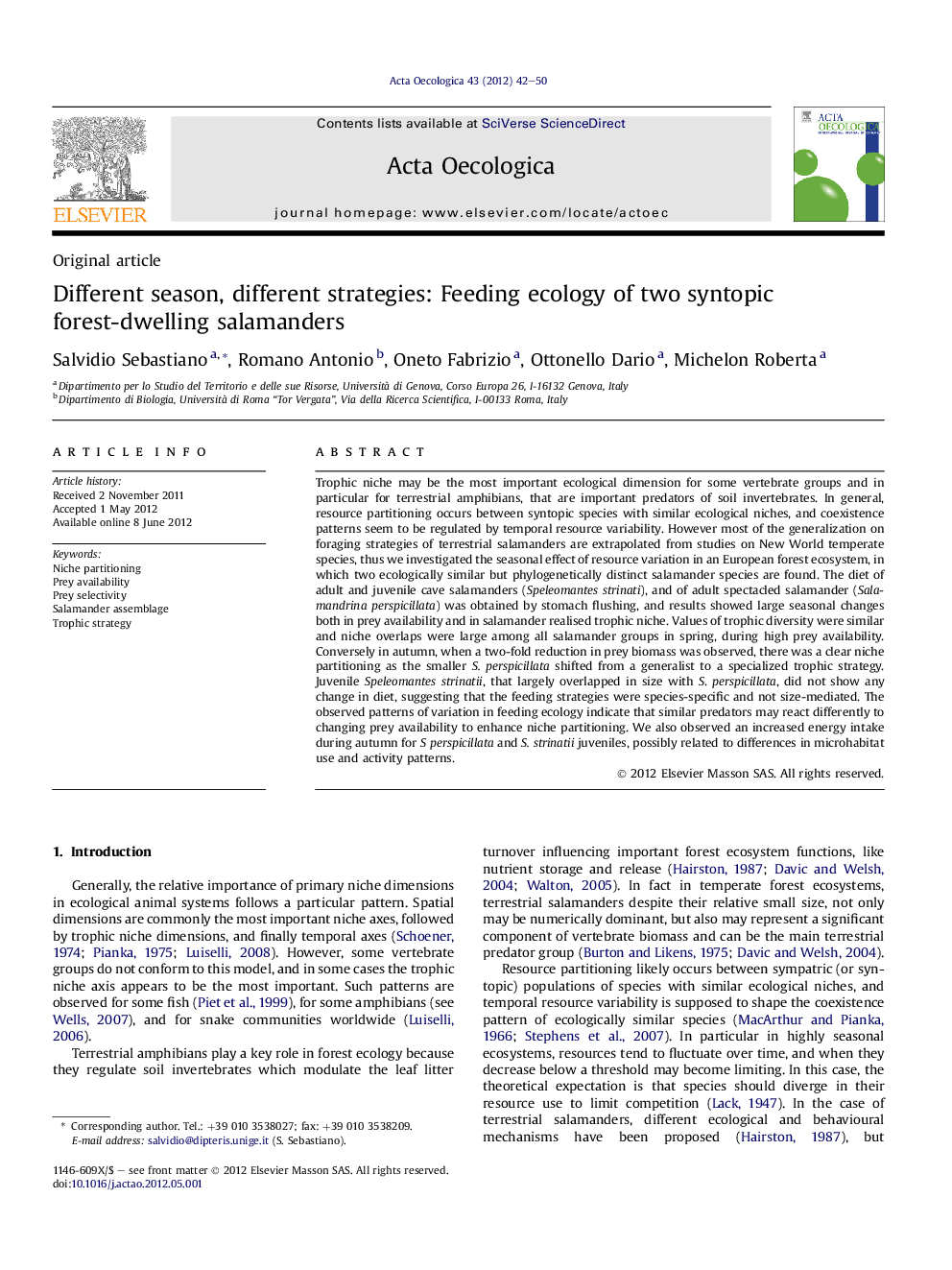| کد مقاله | کد نشریه | سال انتشار | مقاله انگلیسی | نسخه تمام متن |
|---|---|---|---|---|
| 4380859 | 1617728 | 2012 | 9 صفحه PDF | دانلود رایگان |

Trophic niche may be the most important ecological dimension for some vertebrate groups and in particular for terrestrial amphibians, that are important predators of soil invertebrates. In general, resource partitioning occurs between syntopic species with similar ecological niches, and coexistence patterns seem to be regulated by temporal resource variability. However most of the generalization on foraging strategies of terrestrial salamanders are extrapolated from studies on New World temperate species, thus we investigated the seasonal effect of resource variation in an European forest ecosystem, in which two ecologically similar but phylogenetically distinct salamander species are found. The diet of adult and juvenile cave salamanders (Speleomantes strinati), and of adult spectacled salamander (Salamandrina perspicillata) was obtained by stomach flushing, and results showed large seasonal changes both in prey availability and in salamander realised trophic niche. Values of trophic diversity were similar and niche overlaps were large among all salamander groups in spring, during high prey availability. Conversely in autumn, when a two-fold reduction in prey biomass was observed, there was a clear niche partitioning as the smaller S. perspicillata shifted from a generalist to a specialized trophic strategy. Juvenile Speleomantes strinatii, that largely overlapped in size with S. perspicillata, did not show any change in diet, suggesting that the feeding strategies were species-specific and not size-mediated. The observed patterns of variation in feeding ecology indicate that similar predators may react differently to changing prey availability to enhance niche partitioning. We also observed an increased energy intake during autumn for S perspicillata and S. strinatii juveniles, possibly related to differences in microhabitat use and activity patterns.
► The seasonal effect of resource variation in a forest salamander assemblage was investigated.
► When resources decreased, the smallest salamander became a specialist predator.
► The observed change in feeding was species-specific and not size mediated.
► Higher energy requirements, due to a change in activity patterns, possibly caused this behaviour.
Journal: Acta Oecologica - Volume 43, August 2012, Pages 42–50